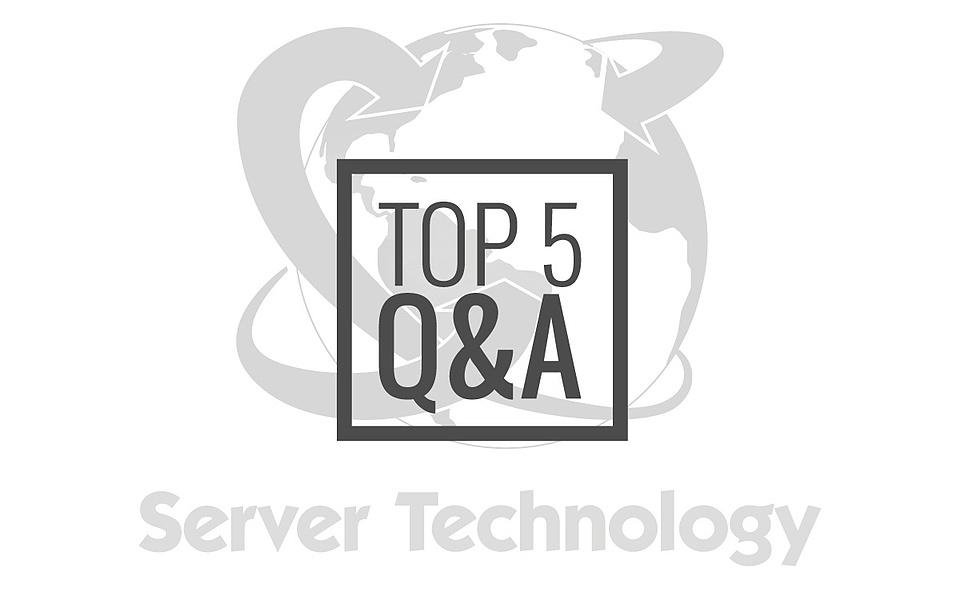Top 5 Questions From the Edge Computing Webinar Answered
RJ Tee
July 24, 2017
- Categories:
- Tags:
- Edge Computing

You asked, we answered. During our highly anticipated webinar last week, "Delivering Resilience and Uptime at the Edge," our speakers were asked a few questions in regards to the challenges presented by edge computing, their views on its future development, as well as how Server Technology's portfolio of products will address its demands.
Here are the top 5 questions answered by our speakers:
1. Bearing in mind that edge computing can take place in many different types of environments, what are some of the specific challenges that are unique to different sites?
(Answered by Marc Cram, Director OEM and Global Accounts, Server Technology) Let’s think about the environment in a telco hut, which may be adjacent to homes, a field or a roadside and you may have AC power or solar power or a UPS, all within the one facility and any part of that infrastructure may go down at any time due to a number of different circumstances. As a result, you need to have something that interacts with all of the various systems and has the ability to report status and to facilitate as rapid a recovery as possible. In addition, you want a system that can monitor the IT infrastructure in the building that will tell you whether you need to provide reset capability to that remote infrastructure.
2. What are the features that Server Technology’s solutions have in terms of tackling the challenges thrown up at the various edge locations?
(Answered by Wolfgang Goretzki, Senior Solutions Manager, Server Technology) It requires a combination of intelligent and importantly switched rack PDUs, so you can remotely reset connected IT devices, combined with a power management solution we call Sentry Power Manager (SPM). Another important requirement is high power density. Our High-Density Outlet Technology (HDOT) offers the maximum number of outlets in the smallest PDU form factor available on the market. Other features are the autonomous switching capability we call smart load shedding, which allows us to switch devices on and off again based on temperature or power load triggers. There are also many other important features, such as alternating phase technology, which allows a balanced load on all phases and helps with better cable management and airflow at the rear of the cabinet. Also, the high operating temperature range of up to 60°C means the PDU can cope with the rising temperature from cooling air flow.
3. We’ve had several questions around temperature and humidity monitoring PDU functionality, with end users curious as to how Server Technology’s sensor, expansion modules, and automation components combine to provide a full solution stack?
(Answered by Wolfgang Goretzki) We can connect two temperature humidity sensors to each rack PDU, so that would be four if you have an A feed and B feed. If you wish to meet the ASHRAE standard of 6 humidity sensors, you can add an environmental monitoring unit which allows for additional sensors, fully covering these needs. The environmental control unit would provide additional capabilities of connecting water sensors or dry contact, this can all be connected to the rack PDU, saving switched ports, saving IP addresses and reducing the cable clutter in the rack.
4. How do you see the edge computing landscape developing into the future? Could you share a few thoughts with us?
(Answered by Prof Ian Bitterlin, Principal Consultant, Critical Facilities Consulting Ltd) As every year goes by, we do more and more IT capacity, using less and less power. Using cell towers for edge a few years ago would not have been possible, as there would not have been enough space or power capability left over for putting in edge computing. But as we have gone on and the computing power has got greater and greater per watt, there is power left over and one cabinet in a cell tower can now do a huge amount of computing very quickly, enabling edge computing, by virtue of the fact that the computing capacity per watt increases, encouraging more and more cabinets to be squeezed into remote locations (remote from the larger data centers). And that by its very nature will mean that they will be predominantly unmanned locations and that intelligent PDUs and remote monitoring solutions will be crucial in maintaining uptime and resilience in an emergency state. Edge computing is a perfect storm that will grow almost as a function of the fact that we have our mobile devices with more compute capacity and usage for video and data, and this will naturally grow, and we need to be ready to face the growth with these types of remote management solutions that can be reset remotely.
5. How does Server Technology plan to develop its product portfolio to address the demands of edge computing?
(Answered by Marc Cram) Server Technology is known for being an innovator in the power space and we will continue to integrate support for anything that will drive robustness, that will drive resilience, that will drive quick recovery and by that you can expect to see higher density, increased temperature ranges, more outlets in the smallest form factor, more control, and support for more software access and intelligence built in.
Thanks for your submission. One of our Power Strategy Experts will get back to you shortly.